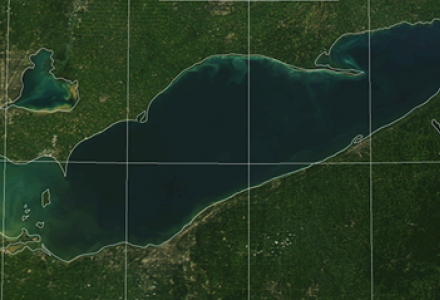
The perspectives of Indigenous peoples who have lived near the St. Lawrence River and Lake Ontario for millennia are being incorporated into an ongoing review of water level and flow regulations.
The first phase of the Plan 2014’s Expedited Review took steps to include the needs and perspectives of First Nations, Tribal Nations and the Métis Nation of Ontario.
The IJC Great Lakes-St. Lawrence River Adaptive Management (GLAM) Committee completed Phase 1 of the Plan 2014 expedited review in November 2021 and included numerous meetings with representatives of Indigenous Nations located in the lake and river watersheds. One of the key findings in the Phase 1 report is that these discussions should continue.

The focus of the Phase 1 report was the International Lake Ontario-St. Lawrence River Board, which can depart from outflows normally prescribed by Plan 2014 during extreme high or low water conditions.
The Phase 1 report noted that at least 22 Indigenous nations are located within the Lake Ontario and St. Lawrence River watersheds and have a traditional interest in water levels and other regulatory matters.
Of these, six are located on the lake or river shoreline, including the Mohawks of Akwesasne in Quebec, Ontario and New York. Their lands along the St. Lawrence River include both the Mohawk Council of Akwesasne First Nation in the north and the Saint Regis Mohawk Tribe to the south. This Akwesasne community is immediately downstream of the dam that regulates outflow from Lake Ontario and they are acutely affected by changes in water level and flow.
Other Mohawks communities include the Mohawks of Kahnawake and the Mohawks of Kanesatake located farther downstream on the St. Lawrence, and the Mohawks of the Bay of Quinte on Lake Ontario’s north shore.
During Phase 2 of the review, which began in the fall of 2021, the GLAM Committee intends to continue discussions with members of Indigenous Nations about the impact of changing water levels and will work to incorporate Indigenous peoples’ perspectives and knowledge into the review.
In Phase 2, opportunities will be explored for including traditional ecological knowledge cultural perspectives and traditional ways of knowing into future evaluations of Plan 2014.
The GLAM Committee's Phase 1 report on the Expedited Review of Plan 2014 will be published in the coming weeks.

Steve Orr is a science writer in Rochester, New York, who has been assisting the Great Lakes-St. Lawrence River Adaptive Management Committee with the Plan 2014 expedited review.



